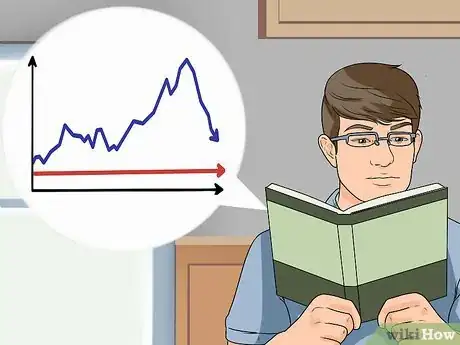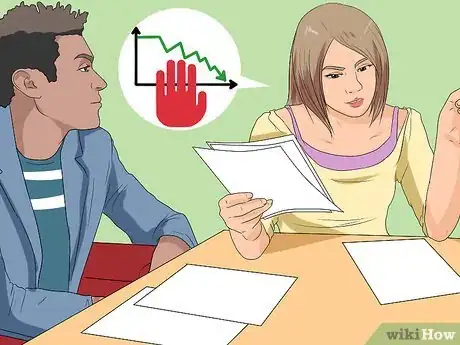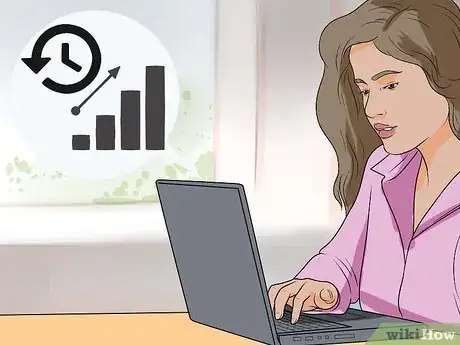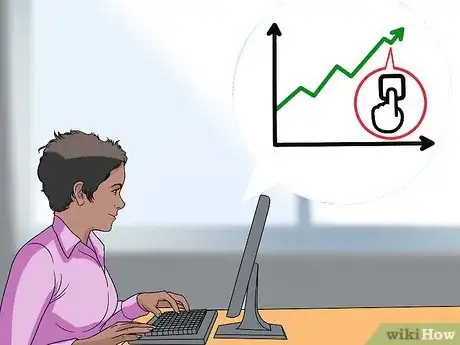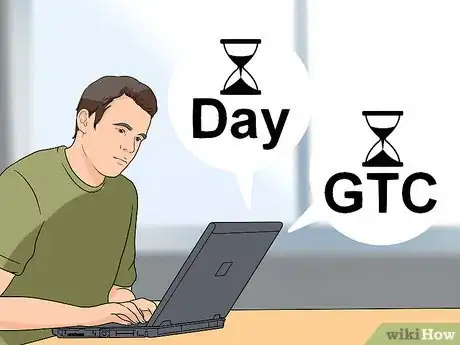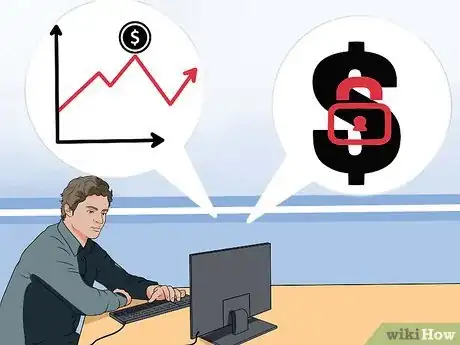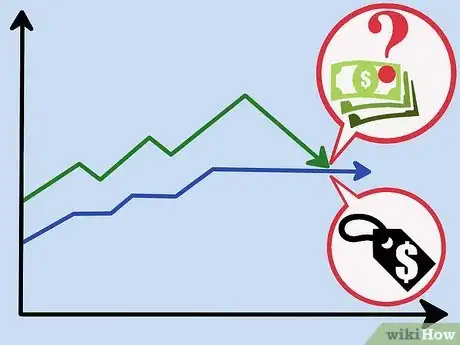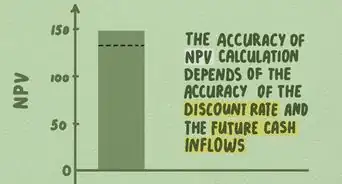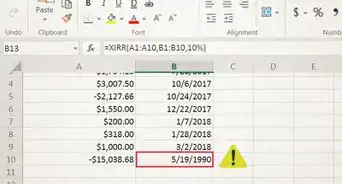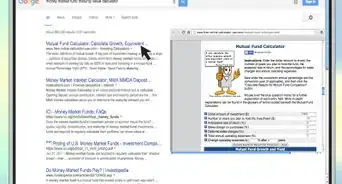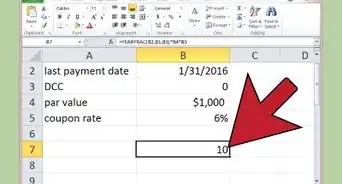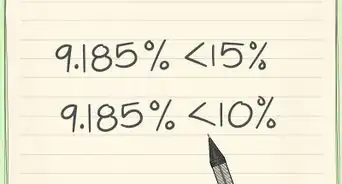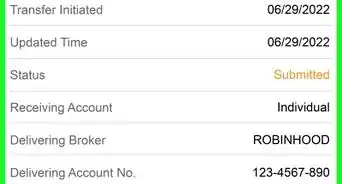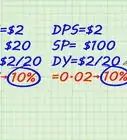This article was co-authored by Michael R. Lewis. Michael R. Lewis is a retired corporate executive, entrepreneur, and investment advisor in Texas. He has over 40 years of experience in business and finance, including as a Vice President for Blue Cross Blue Shield of Texas. He has a BBA in Industrial Management from the University of Texas at Austin.
There are 9 references cited in this article, which can be found at the bottom of the page.
wikiHow marks an article as reader-approved once it receives enough positive feedback. This article received 11 testimonials and 98% of readers who voted found it helpful, earning it our reader-approved status.
This article has been viewed 348,430 times.
A trailing stop loss is a type of stock order. Using this order will trigger a sale of your investment in the event its price drops below a certain level. The trailing stop loss order can help make the decision to sell easier, more rational and less emotional. It is designed for the investor who wishes to minimize risk, helping him or her minimize losses while maximizing potential gains.[1] With the trailing stop loss, it all happens automatically, so you and your trader don’t constantly have to watch the stock price.
Steps
Understanding a Trailing Stop Loss
-
1Understand how a trailing stop loss works. The trailing stop loss is a type of sell order that adjusts automatically to the moving value of the stock. Most pertinently, the trailing stop loss order moves with the value of the stock when it rises. For example:[2]
- You purchase stock at $25.
- The stock rises to $27.
- You place a sell trailing stop loss order using a $1 trail value.
- While the price moves up, the trailing price (stop price) will stay at $1 less than the current price.
- The stock price reaches $29 and then it starts to drop. The trailing stop loss would be at $28.
- Once the stock price hits $28, your trailing stop loss order will become a market order. This means that you will sell the stock. At this point, your gains are locked in (assuming a buyer can be found).
-
2Recognize what a traditional stop loss is. A traditional stop loss is an order designed to limit losses automatically. It does not follow or adjust to the stock's changing price, unlike the trailing stop loss order.
- The traditional stop loss order is placed at a specific price point and does not change. For example:
- You purchase stock for $30.
- You set your traditional stop loss order at $28. In this case, the stock will be sold at $28.
- If the stock price rises to $35 and then dips suddenly, you will still sell at $28. You will not protect the paper profit you made from the stock's recent rise.
Advertisement -
3Understand how the trailing stop loss order helps to maximize your profits. Use a trailing stop loss order instead of selling at a predetermined level. Instead the order automatically adjusts when the price of your investment rises.
- With a traditional stop loss order, say you have a $15 stock. You establish a sell level (say, $10) that will not change. If the price of your stock goes up to $20, you still have a $10 sell level. If the stock plummets, you will still sell at $10.
- With a trailing stop loss order, say you have a $15 stock. You might establish a trailing stop loss order of 10% instead of a traditional stop loss order at, say, $13.50. If the stock goes up to $20, you will still use the 10% level. This makes your stop loss order effective at $18 (10% below $20). If you had used a traditional stop loss, your order would have sold at $13.50, and you would have lost the profit you made when the stock went up.
-
4Use an easy, proactive strategy. With a trailing stop loss order, your trader won’t need to manually change the stop conditions. Rather, the trailing order changes automatically depending on the price of the stock.[3] Placing the trailing stop loss order is easy to do.
Placing a Trailing Stop Loss Order
-
1Find out if you can use a trailing stop loss order. Not every broker will allow you to use this strategy. Likewise, not all types of accounts will permit a trailing stop loss order. Be sure to check if your broker allows this type of transaction.
- It is highly recommended that you have the option to use this order.
-
2Track the historical movement of your stock. It is helpful to understand the historical volatility and price movements of your stock. This will give you an idea of how much the stock moves up or down in a given period of time. Use this to determine a reasonable trail value that balances between triggering a premature sale and leaving too much profit on the table.[4]
-
3Choose when you want to place the order. You can place a trailing stop loss order anytime. You can do this immediately after the initial purchase. You can also track your stock and decide to put in the trailing stop loss order later on.
-
4Choose a fixed or relative amount. As noted, a trailing stop loss can be created in one of two ways. You can either use a fixed price or a relative one based on a percentage.[5]
- For example, you can determine either a strict dollar amount (e.g., $10) for the trail or a percentage of the stock’s value (e.g., 5%). In either case, the “trail” is related to the value of the stock. This trail changes over time as the price of the stock changes.
- By using the fixed-dollar option, you limit to a strict dollar value the amount the stock can go down from its highest point before a sell order is automatically placed. Dollar amounts cannot have more than two decimal places (in other words, no tenths of a cent.)[6]
- By using a percentage approach, you can define the appropriate range to allow the stock to go up and down while in a generally rising trend. Percentages used must be between 1% and 30% of the current price.[7]
- Know the risk. The risk with any stop loss is that the stock may dip below the sell point and trigger a sale. Then the stock may reverse and go back up, leaving you behind without the newly accrued profit.
-
5Determine a reasonable trail value. Figure out how much you’d like your trailing stop loss to be.[8] Talk with your broker to determine an appropriate dollar amount or percentage for your trailing stop loss order.
- If you set the value too tight, you might trigger a sale prematurely.
- If you set the value too wide, you might leave too much profit on the table if the stock begins to fall.
-
6Specify if you want a day or GTC order. The trailing stop loss can be placed as either a day or GTC (Good ‘til Canceled) order. This defines the length of time that the trailing stop loss order will be in effect.
- The day order is good until the close of the current day’s market (4 p.m. Eastern Time). If you place the day order when the market is closed, it will remain in effect until the close of the next day of trading.[9]
- The GTC order is good for 120 days in most cases. Thus, the order will be canceled after 120 days. There are some orders that allow for unlimited time on a GTC order.
-
7Choose between a market order and a limit order. A market order is an order to buy or sell the investment at the best current price available.[10] A limit order allows you to set up the purchase or sale of stock at a certain price.
- Once you reach the stop price that you’ve specified in your trailing stop loss order, you can put through a market or limit order. This means that you will sell your stock.
-
8A market order is a default order. It will execute without regard to price.
Expert Q&A
Did you know you can get expert answers for this article?
Unlock expert answers by supporting wikiHow
-
QuestionWill a Trailing Percentage Stop Loss to sell be established off of the current stock price or the current bid price?
 Michael R. LewisMichael R. Lewis is a retired corporate executive, entrepreneur, and investment advisor in Texas. He has over 40 years of experience in business and finance, including as a Vice President for Blue Cross Blue Shield of Texas. He has a BBA in Industrial Management from the University of Texas at Austin.
Michael R. LewisMichael R. Lewis is a retired corporate executive, entrepreneur, and investment advisor in Texas. He has over 40 years of experience in business and finance, including as a Vice President for Blue Cross Blue Shield of Texas. He has a BBA in Industrial Management from the University of Texas at Austin.
Business Advisor
-
QuestionIs there a formula or rule of thumb to apply for TS Percentages for the long- and medium-term investor?
 Michael R. LewisMichael R. Lewis is a retired corporate executive, entrepreneur, and investment advisor in Texas. He has over 40 years of experience in business and finance, including as a Vice President for Blue Cross Blue Shield of Texas. He has a BBA in Industrial Management from the University of Texas at Austin.
Michael R. LewisMichael R. Lewis is a retired corporate executive, entrepreneur, and investment advisor in Texas. He has over 40 years of experience in business and finance, including as a Vice President for Blue Cross Blue Shield of Texas. He has a BBA in Industrial Management from the University of Texas at Austin.
Business Advisor
Warnings
- Choose a traditional stop loss order for highly volatile stocks.[11]⧼thumbs_response⧽
References
- ↑ https://www.interactivebrokers.com/en/?f=%2Fen%2Ftrading%2Forders%2FtrailingStops.php
- ↑ https://www.fidelity.com/trading/faqs-order-types
- ↑ https://www.fidelity.com/trading/faqs-order-types
- ↑ http://www.investopedia.com/terms/t/trailingstop.asp
- ↑ https://research.scottrade.com/knowledgecenter/Public/help/Article?docid=893cd2f7e6074a12acec76812973ce7a
- ↑ https://scs.fidelity.com/webxpress/help/topics/help_definition_t.shtml
- ↑ https://scs.fidelity.com/webxpress/help/topics/help_definition_t.shtml
- ↑ http://www.investopedia.com/terms/t/trailingstop.asp
- ↑ https://scs.fidelity.com/webxpress/help/topics/learn_order_types_conditions.shtml#whataretheguidelinesfortrailing
About This Article
To use a trailing stop loss, make sure that you understand that this is a sell order that adjusts automatically to the moving value of the stock. So, for example, if you purchase a stock at $25 a share, you can use a trailing stop loss to automatically sell your shares if the stock falls below $28 a share, so that you don't take a loss. To purchase a trailing stop loss, talk to your broker to see whether it is an option. If it is, you'll need to decide between a fixed dollar amount or a percentage. For tips from our Financial reviewer about when you should get a trailing stop loss, keep reading!

